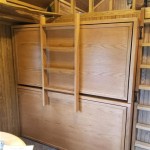How to Put a Raised Bed on a Slope
A sloping garden can present challenges for gardening, but it can also be an advantage. The slope allows for excellent drainage and can provide a variety of microclimates for different plants. By using raised beds, you can create level planting areas even on a steep slope. This article will guide you through the process of building a raised bed on a slope, step by step.
1. Assess the Slope and Choose Your Location
Before you begin building, it is crucial to carefully assess the slope and determine the best location for your raised bed. Consider the following factors:
- Slope angle: The steeper the slope, the more challenging it will be to build and stabilize the raised bed. For very steep slopes, consider creating a series of terraced beds.
- Soil type: Analyze the soil on the slope for drainage and fertility. If the soil is prone to erosion, you may need to add additional support to the raised bed.
- Sunlight exposure: The amount of sunlight the chosen location receives will affect the types of plants you can grow. Choose a spot that receives at least 6 hours of direct sunlight per day.
- Accessibility: Ensure that the location is easily accessible for planting, watering, and harvesting. Consider the distance from your water source and any potential obstacles.
Once you have chosen a location, mark the area for your raised bed. You’ll need to adjust the size and shape to fit the slope and your needs. If the slope is very steep, you may want to consider building multiple smaller raised beds.
2. Prepare the Ground and Build a Stable Foundation
To build a stable foundation for your raised bed on a slope, follow these steps:
- Clear the area: Remove all vegetation, debris, and rocks from the chosen location. Use a shovel or a tiller to loosen the soil and create a level surface.
- Contour the ground: To prevent erosion, consider contouring the ground around the bed to create a slight berm or channel to direct water away from the bed. This will help to protect your raised bed from runoff.
- Lay a foundation: For added stability, lay a foundation of landscaping fabric, gravel, or compacted soil before building the bed. This will provide a barrier against weeds and pests and create a stable base for your bed.
- Use a level: Use a level to ensure that the foundation is level. You may need to adjust the height of the foundation in different areas to accommodate the slope.
3. Construct the Raised Bed Structure
There are various materials you can use to construct your raised bed on a slope, each with its own advantages and disadvantages:
- Timber: Pressure-treated lumber is a durable and affordable option. However, it contains chemicals that can leach into the soil over time so consider using untreated cedar or redwood.
- Composite: Composite materials are durable and weather-resistant, but they can be more expensive than timber. They are a good choice for a low-maintenance option.
- Concrete blocks: Concrete blocks provide a very sturdy and long-lasting structure. They can be stacked to create a raised bed of any desired height. Concrete blocks are a good choice for heavier raised beds.
- Stone: Stone is a beautiful and natural option for raised beds. It is durable and long-lasting, but it can be expensive and challenging to work with.
Once you have chosen your materials, assembly is relatively straightforward:
- Measure and cut: Measure and cut your materials to fit the desired dimensions of your raised bed. If you are using timber, consider using screws instead of nails for a more durable structure.
- Assemble the frame: Assemble the frame of your raised bed, making sure to use sturdy supports and bracing for stability, especially on a slope.
- Secure the frame: Secure the frame to the foundation using appropriate fasteners. Use screws or nails to attach the frame to the foundation.
4. Adding Soil and Planting
You can use a variety of soil mixes in your raised bed. A good mix should be rich in organic matter, provide adequate drainage, and support the plants you are growing.
- Fill with soil: Fill your raised bed with the appropriate soil mix. You may want to use layers of different materials to improve drainage and fertility. For example, a layer of coarse gravel at the bottom of the bed can improve drainage, while a layer of compost added to the top can enrich the soil.
- Plant your plants: Plant your chosen plants according to their specific needs and spacing requirements. Be sure to carefully consider the slope and ensure that the plants are planted at a level that allows for good drainage.
After planting, maintain your raised bed by watering regularly, fertilizing as needed, and weeding to keep it healthy and productive. You can also add a layer of mulch to help retain moisture and suppress weeds. Enjoy the fruits (and vegetables) of your labor!

How To Build An Organic Raised Bed On A Sloped Yard Deeply Southern Home

How To Build An Organic Raised Bed On A Sloped Yard Deeply Southern Home

How To Build An Organic Raised Bed On A Sloped Yard Deeply Southern Home

How To Build Raised Garden Beds On A Slope

How To Build Raised Garden Beds On A Slope

How To Build A Terraced Garden Bed On Slope

How To Build An Organic Raised Bed On A Sloped Yard Deeply Southern Home

Building A Terraced Garden On Hill Tejas Farm

How To Build Raised Garden Beds On A Slope

How To Build An Organic Raised Bed On A Sloped Yard Deeply Southern Home







